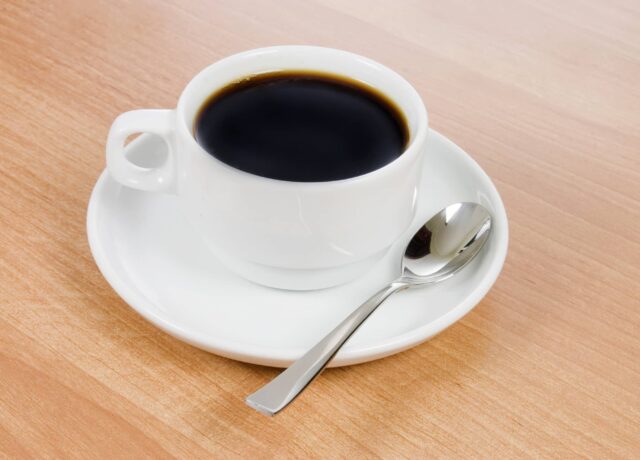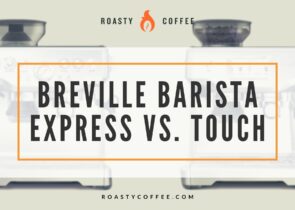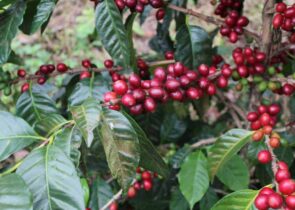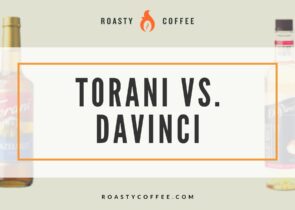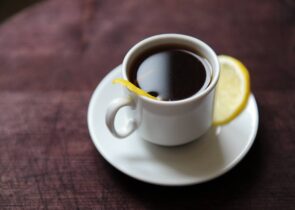If you fancy yourself as a coffee industry expert, you’ll know that chilled drinks, like cold brew, are the biggest hits among coffee drinkers during the summertime.
You’ll also know that a new trend has sprung up in the realm of cold coffee within the last few years, taking the java world by storm: enter nitro coffee.
We don’t doubt you’ve seen this drink’s name written on the menu at your favorite café, but we’re willing to bet that not everyone knows what nitro coffee is or why coffee aficionados are so excited about it.
That’s where we come in! We’re going to give you the full lowdown on perhaps the biggest coffee trend to emerge in a long time. Read on to find out more!
What is Nitro Coffee?
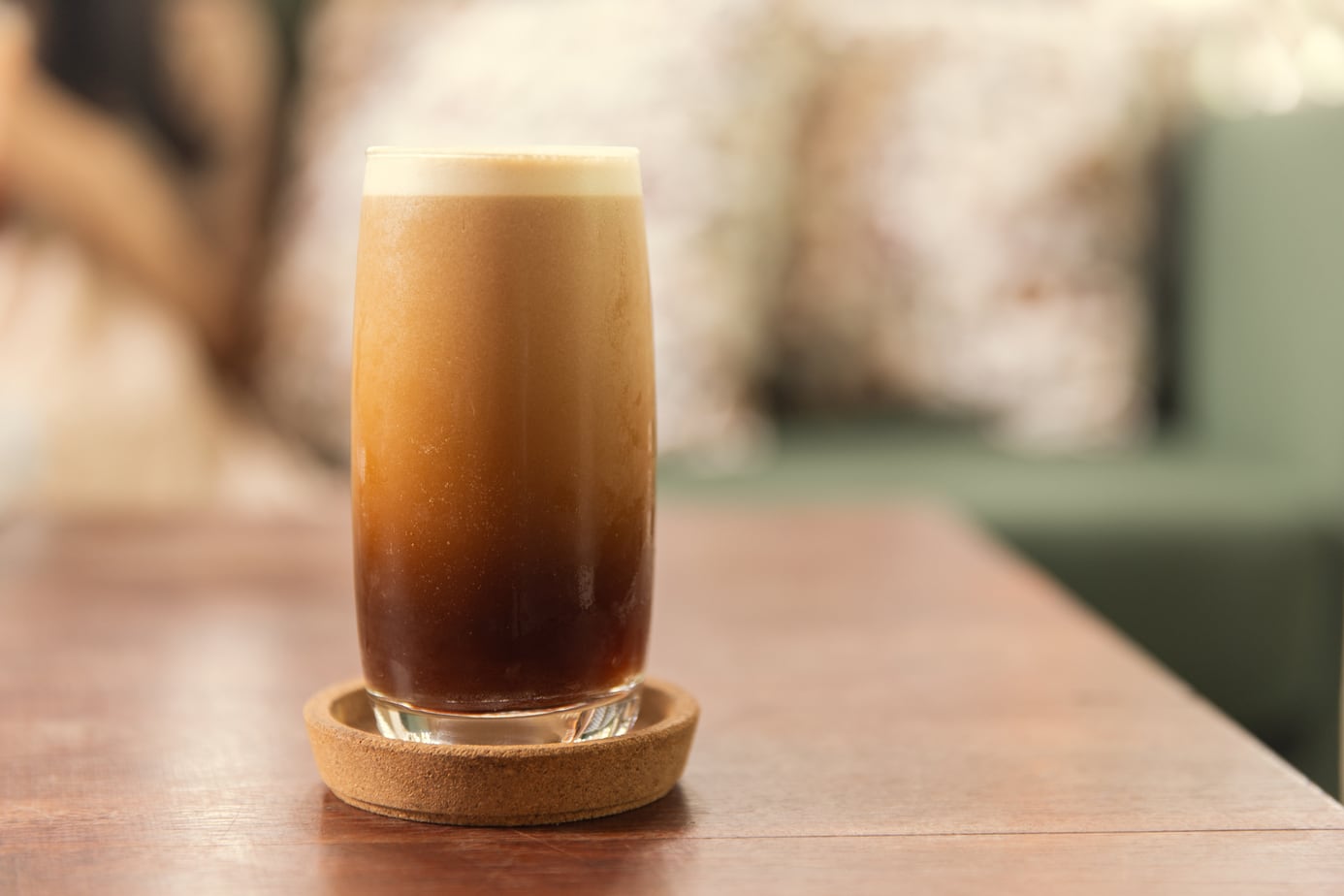
Nitro coffee is just like cold brew coffee, only it’s been infused with nitrogen gas to give it a unique, sweeter flavor and creamy mouthfeel.
This coffee’s origin is a little murky, but it’s said to have burst onto the scene in 2012 before hitting the shelves in canned form in 2014. Since then, its popularity has skyrocketed, which is why you’ll find it in almost every specialty coffee shop around.
Origin
As mentioned above, as with any good invention, there’s some contention as to who exactly started the trend.
The most common story you’ll encounter, though, is that Cuvee Coffee founder Mike McKim birthed the caffeinated beverage in Austin, Texas, and Portland, Oregon’s Stumptown Coffee Roasters followed suit soon after.
However, according to Esquire, The Queens Kickshaw deserves credit for bringing this drink to life. The New York coffee pub was the first to start serving draft coffee in 2011.
Regardless of who actually came up with the idea, it was a good one, and it’s a must-try drink for any cold coffee lover.
Gas It Up
While the idea of people putting nitrogen in their coffee may seem startling at first, the idea of gassing up drinks isn’t exactly new. From soda to sparkling water, drinks with added gas are nothing new. After all, it gives the beverage a little pizzazz.
The “infused with nitrogen” part might throw you off simply because it’s not used as commonly as carbon dioxide gas.
Coffee isn’t the only drink that nitrogen is added to, though. Some beer brands also use this gas in their products.
So, Why Nitrogen?
The tasteless, odorless nitrogen adds to the coffee’s flavor and texture, but if you’re imagining fizzy coffee, that’s not quite how this works.
Instead of making it crackly as carbonation does, nitrogen makes your drink foamy. The addition of this gas gives the coffee a velvety texture akin to a frothy beer.
Nitrogen makes black coffee taste and feels as if cream and sugar have already been added to it, which is why the gas is an exciting prospect for most coffee lovers.
How It’s Served
Due to its unique composition, cups of coffee infused with nitrogen are also served uniquely.
While a few companies have unlocked the secret to canning it, the experience between canned and fresh is still considerably different.
On Tap
Because it’s challenging to keep nitrogen gas in liquids, nitro coffee is typically served on tap. The smaller nitrogen bubbles, which give the coffee its creamier texture, are less likely to dissolve when added from a tap rather than premade.
A dispenser is required to create the pressure needed to add nitrogen to the beverage.
Unfortunately, that means it’s pretty difficult to make your own nitro brew at home, as it requires specialized equipment. But we’ll dive more into that a little later on.
Tasty Additions
Even though the nitrogen in this creative coffee drink gives it a natural sweetness, there are those out there who still want a little more oomph.
Rather than adding sugar, though, many people satisfy their sweet tooth and enhance the nitro coffee experience with other tasty add-ins.
Common additions include vanilla syrup and sweet cream. However, some shops have gone the extra mile with their concoctions.
For example, Mighty Brew Bros in Manhattan, New York, created the Nitro Pop and the Nitro Float. The first has a coffee popsicle garnish, and the second has vanilla ice cream in it.
So, if you’re already a fan of nitro coffee, you can try one of these exciting combos to get even more out of the drink.
Why the Hype?
As we mentioned earlier, this drink is becoming wildly popular. It’s popping up everywhere, from Starbucks to fitness studios. You’ll probably even find cans of the stuff on the shelves of grocery stores and gas stations.
Fitness Fever
This drink has caught a lot of attention from health and fitness fans. Nitro-infused coffee boasts a set of rather impressive health benefits, including lower acidity, antioxidants, increased metabolism, and decreased risk of diabetes.
The nitrogen creates a natural flavor that hints at sweetness, allowing many coffee fanatics to drink it straight. Also, it’s a cold brew, which means it’s less acidic and therefore easier on the digestive system.
Additionally, canned nitro often has nut-milk blends high in healthy fats. These also help keep the nitrous oxide in the drink.
Unfortunately, with all that greatness comes some not-so-greatness, including a higher caffeine content (which can be dangerous for cardiovascular patients or pregnant women) and a lower amount of super-beneficial chlorogenic acid.
Club Coffee
The nitro coffee you find in coffee shops is so special because it’s made with the company’s signature coffee beans.
Since nitro coffee is dependent on method and technique rather than the type of bean, virtually any shop can join in on the nitro craze if they purchase the right equipment.
And since many coffee shops put so much thought into selecting the particular beans and blends they offer, you can bet that you’ll get a nitro-infused cup that’s delicious.
Frequently Asked Questions
Is Nitro coffee stronger than espresso?
The short answer? No.
However, are you going to get more caffeine from a cup of nitro than you would from a shot of espresso? Absolutely.
A regular cup of coffee (eight fluid ounces) has about 65 milligrams of caffeine. Nitro cold brew can have at least 30 percent more caffeine per ounce than its standard counterparts because it is made using a higher ratio of grounds to water.
So, you could be looking at around 90 milligrams of caffeine per eight-ounce cup.
On the other hand, espresso is sold and served by the ounce in “shots,” and most people only consume one or two shots at a time. Each shot contains about 64 milligrams of caffeine (about the same as a standard cup of coffee).
However, a double shot (still only a quarter of the amount of coffee) will have about 120 milligrams of caffeine.
Of course, the exact caffeine content will vary depending on the beans used. But as a general rule, if you get a nitro cold brew from the tap, you will get more caffeine than you would from a single serving of either regular coffee or espresso.
Is Nitro coffee bad for you?
Nitro cold brew has become increasingly popular in fitness sectors, especially as an alternative to iced coffee and other caffeinated drinks. So it’s natural to wonder, is this healthier than the alternatives?
In some ways, yes! Due to the natural sweetness of the nitro cold brew, most people can enjoy the beverage with little to no add-ins. You can’t say the same for many other caffeinated sports beverages, which often use added sugars or creamers to improve the flavor.
Not only does swapping in nitro for your go-to caffeine boost help cut down on calories, but it is also pretty refreshing by its own merit. It combines the cooling sensation of a cold brew with the bright fizziness of a soda or sparkling water, all with the creaminess of a smoothie.
The only thing you need to look out for with this nitro coffee is the caffeine — the same can be said about most sports drinks, but it bears repeating.
Like most caffeinated beverages, nitro can increase your heart rate, posing an issue for many caffeine-sensitive individuals or those experiencing heart problems or anxiety.
What is the difference between cold brew and nitro coffee?
They’re the same thing, at first. Plain cold brew is infused with nitrogen in a keg to create nitro coffee. Think of cold brew as ‘still’, and nitro coffee as ‘sparkling’ (but a creamier version with finer gas bubbles).
How is it different from iced coffee?
First off, nitro coffee is made using a cold brew rather than an iced coffee base. That means rather than chilling the beverage after brewing, the coffee is brewed at room temperature or colder.
This cold extraction also produces a coffee concentrate, rather than the standard coffee you’d get from a drip brewer.
The coffee concentrate can be watered down to varying degrees, allowing for more strength control. Also, nitro coffee includes the “nitro” part (i.e., the addition of nitrogen gas), further differentiating it from your usual iced coffee or frappé.
Can you put milk in nitro cold brew?
Nothing’s stopping you from making a kegged and nitrogen-infused latte. But it’s not a popular choice, as dairy milk can be nasty to clean out. We enjoy how Starbucks does it, with their signature cold foam-topped nitro drinks.
Why can’t you get a Starbucks Nitro Cold Brew in Venti?
Watching coffee foam cascade is part and parcel of the nitro coffee experience. Unfortunately, this does not happen all the time on Venti cups, leading to it being axed — if we are to believe what Starbucks told Fox News.
Another popular theory is how the lack of ice in nitro coffee drinks will cost the company an unreasonable increase in ingredient cost and production time if Ventis are introduced.
Bumping a Grande to a Venti Nitro Coffee means 8oz of cold brew, compared to 4oz in a regular Venti Cold Brew of the non-nitro variety.
There seems to be no way around this company policy, so stick to a Tall or Grande.
Why can’t you put ice in nitro cold brew?
You certainly can, but it won’t be as enjoyable a drinking experience. Not only will ice ruin the drink’s creamy texture, ice cubes or chips get in the way of what’s an otherwise creamy texture.
For the coldest nitro coffee, make sure you chill your cold brew and keg very well.
Does nitro coffee have alcohol?
That’s a fair question to ask since this drink, topped with a thick layer of nitro foam, looks a little bit like a stout beer. That, paired with the fact that coffee shop owners store the stuff in kegs, can understandably give the impression that it’s an alcoholic beverage.
But no, nitro-infused coffee doesn’t have any alcohol in it.
Can you make your own nitrogen-infused coffee?
Yes, you can make nitrogen-infused coffee from the comfort of your own home!
The nitro coffee brewing method is a lot like making a cold brew. You’ll start by pouring coffee grounds and filtered water into a large container (but make sure it’s not so large that it can’t fit into your fridge!), and give the two ingredients a gentle stir.
Cover the container, and let it steep in the refrigerator for 12 to 24 hours, just as you would with regular cold brew.
Once the steeping time is over, you’ll need to strain the coffee mixture with cheesecloth or some kind of fine mesh filter. Then, pour the cold-brewed coffee into a nitro coffee dispenser.
Charge it with nitrogen according to your dispenser’s instructions, give it a few shakes, and you’re ready to enjoy your creamy coffee drink.
What’s the best nitro coffee maker?
Royal Brew Nitro Cold Brew Coffee Maker
And since we’re on the subject of making nitrogenated coffee at home, allow us to introduce you to our favorite nitro coffee maker.
Royal Brew’s mini keg is our top choice for enjoying coffee on tap, and its stainless steel body ensures it’s durable enough to be used for years to come.
The nitro coffee maker uses a stout beer faucet and a special gas blend to produce super-smooth coffee with a creamy texture that will hit the spot every single day.
Bear in mind that if you use Royal Brew’s nitro coffee maker, you’ll also have to buy nitrogen capsules for it, so be sure to factor those into your budget if you’re considering purchasing one of these mini kegs.
NitroBrew Nitro Cold Brew Coffee Maker – Single Serve System
If you’re more of a brew for yourself kinda guy, the NitroBrew Nitro Cold Brew Coffee Maker might be more your speed. This miniature nitrogen kegging setup allows you to make nitro one glass at a time.
The most unique thing about this system is how it draws nitrogen from the air through a compressor unit — no pesky cartridges needed!
It’s easy to use too: Fill the mini-keg with up to 12oz of cold brew, then cap, charge, shake, and serve!
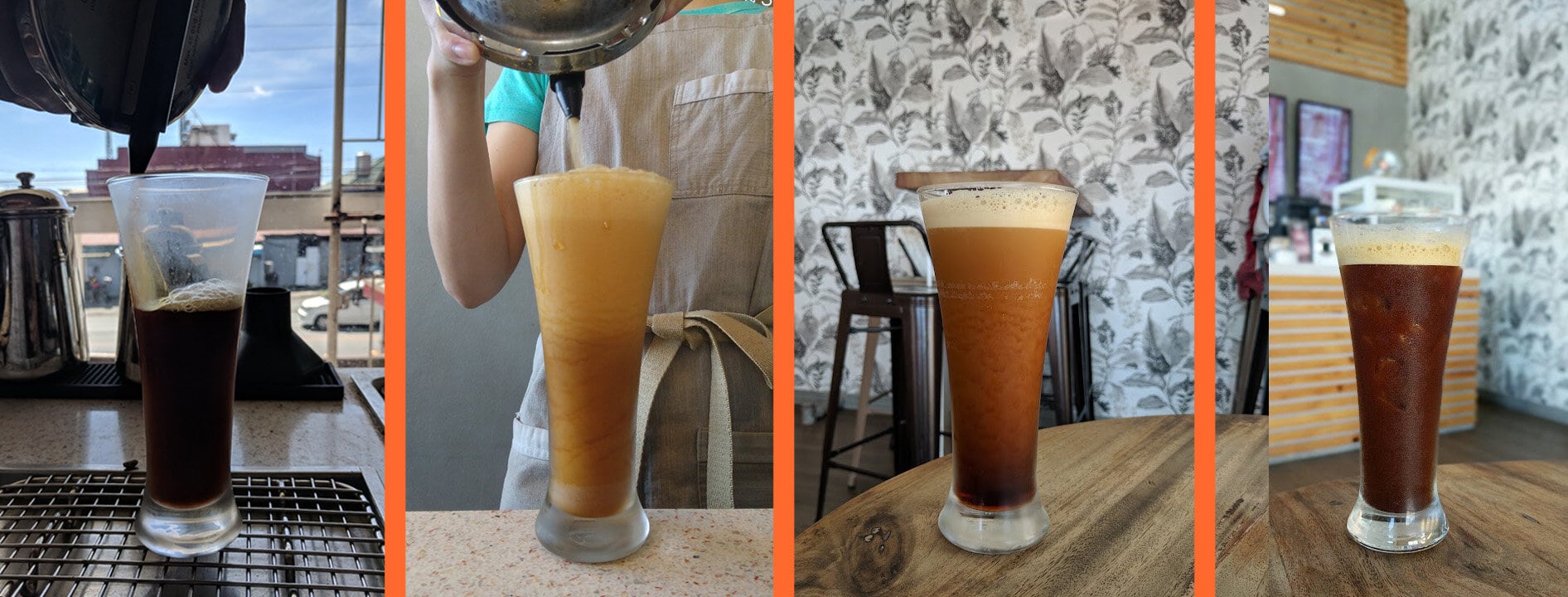
The drawback with this kind of device is the clean-up effort for a single glass of nitro cold brew coffee. But it might be worth trying if you like to experiment. This ‘Nitro Latte’ is a must-try for fans of creamy coffees:
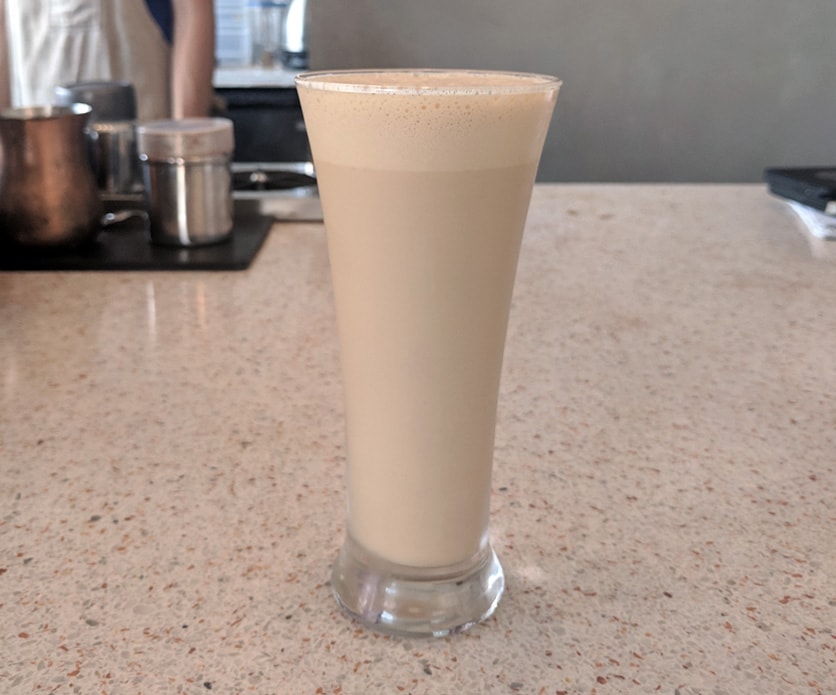
Another guilty pleasure of ours? Equal parts cold brew and your favorite stout or porter in the NitroBrew. This ‘Nitro Beer’ using Guinness is our St. Paddy’s Day go-to!
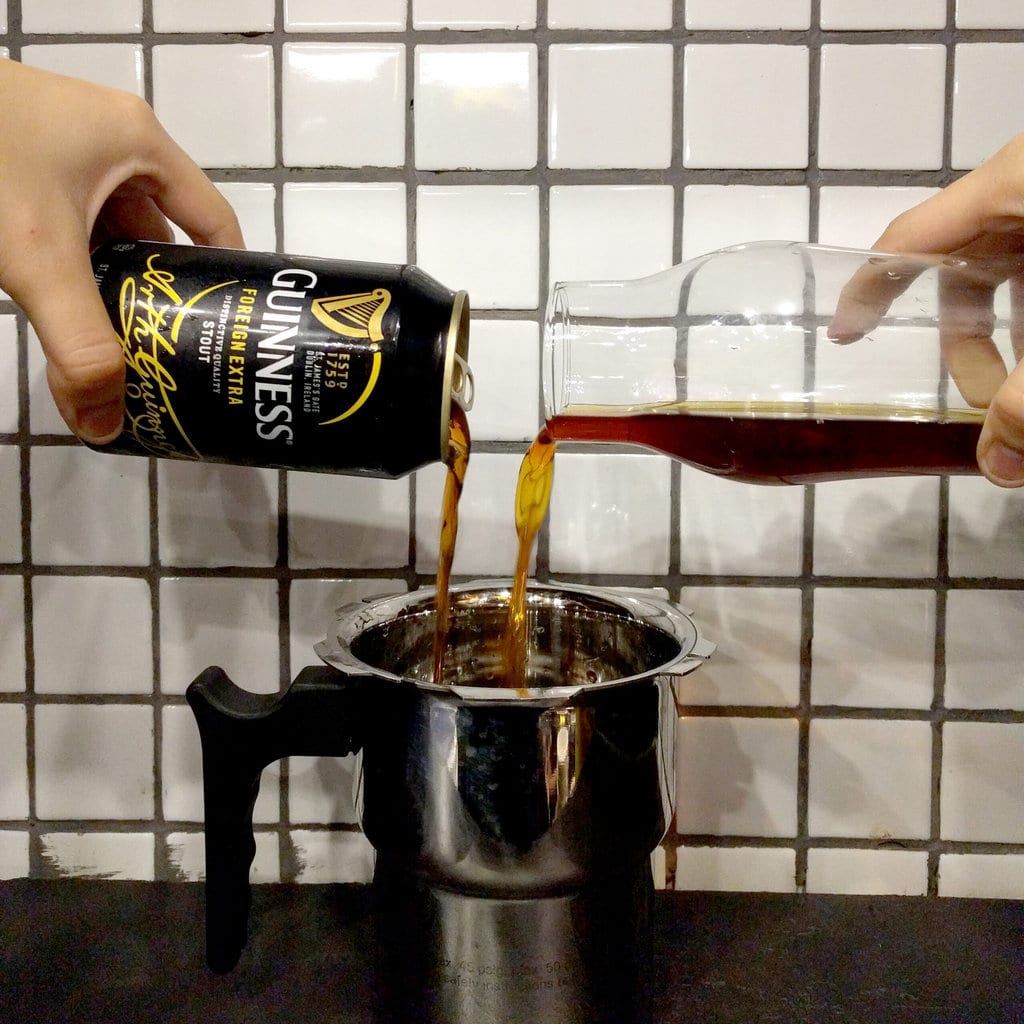
Wrapping Up
If you haven’t tasted nitro cold brew coffee yet, you should. The cup of smooth, frothy goodness is a crowd-pleaser. Plus, the very experience of drinking black coffee that tastes sweet and feels creamy is an exciting prospect.
So, whether you’re ordering it at a local coffee shop or grabbing a can from a retailer, nitro coffee is a trend to try.
Happy Caffeinating!



